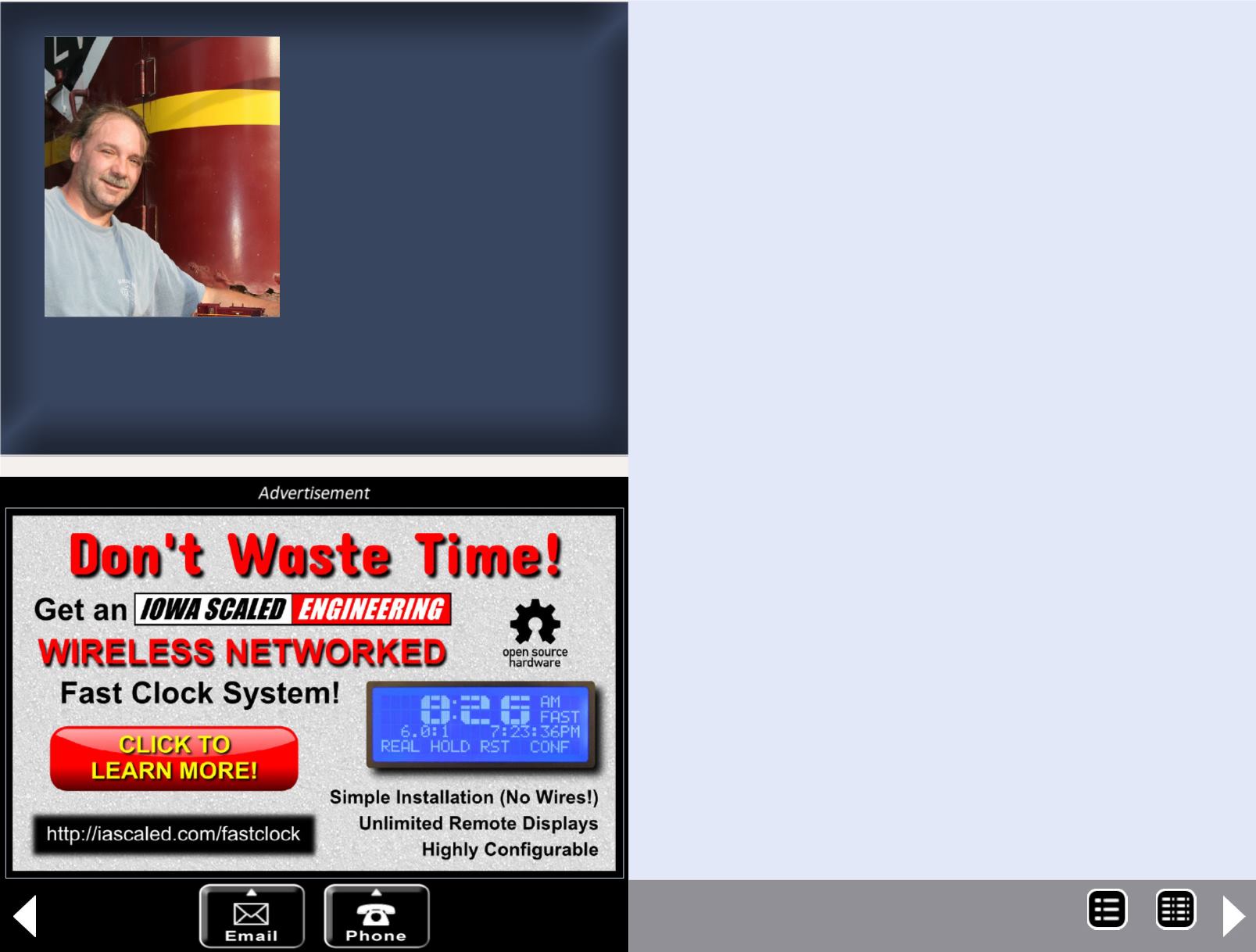
M.R. (Matt) Snell has been a model
railroader and railfan for 30 years.
His interest in railroading blossomed
while growing up in New Jersey sur-
rounded by multiple freight and pas-
senger rail lines including Amtrak’s
Northeast Corridor.
Presently residing in Ohio far from his
railroading roots, Matt and his wife De-
bie share the hobby, modeling the area
he grew up in: north-central Jersey.
Their “Conrail New Jersey Division”
layout has been featured in Great
Model Railroads, Rail Model Journal, and in the Allen Keller Great Model
Railroads DVD series. Matt has had articles in Railroad Model Craftsman,
RailModel Journal, Scale Rails and Model Railroader, as well as online at
railroad.net.
Radio base station - 9
Railroad Radio
As modelers we commonly add detail castings representa-
tive of radio communication to our models without giving
any thought to how radio systems work and how vital they
are to modern rail operations.
Most railroad radio communication in the USA and Canada
utilizes 96 radio frequencies located between 160 and 162
MHz on the VHF (Very High Frequency) radio band. The fre-
quencies are standardized by the American Association of
Railroads and each has been allocated a channel number
between 2 and 97. Modern radios are capable of accessing
the full spectrum. In the past, with simpler radios, leading
locomotives had to be a home road unit equipped with the
proper radio channels for the territory it was operating in.
In addition to the VHF spectrum, bands on the UHF (Ultra
High Frequency) spectrum are also in limited use for End-
Of-Train telemetry. Both bands can be monitored with a
hand-held scanner, enabling railfans to hear conversations
between dispatchers and trains, crews performing switch-
ing, talking defect detectors, and other rail operations.
While 96 channels are available, it is important to note that
only certain channels are in use within specific geographic
areas and that specific channels are also designated by
road. This insures that everyone within a railroad district
is using the same frequencies. The frequencies for a geo-
graphic area or rail line are generally listed in the railroad's
employee timetable.
Listening in
Monitoring railroad communications can be more than just
fun, it can help us learn how the prototype operates while
also providing a useful tool for railfanning.
MRH-Jan 2014


